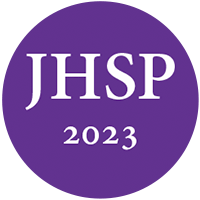The professional home for health service psychologists.
Join a community of 15,000 psychologists and trainees.
Learn it today. Apply it tomorrow.
Connecting you to what you need in your career.
Making a difference.
Psychological practice has changed dramatically over the past 125 years. The two world wars both served to stimulate and change the scope of practice for psychologists. We surveyed over 3,000 doctoral psychologists about the impact of the COVID-19 health crisis on their clinical practices. Practice changed from primarily in-office to mostly telepsychology practice over the course of 2 weeks in March of 2020. The long-term effect on professional practice in psychology is not known.
Access continuing education course on CE.NationalRegister.org
Alvord, Mary K. (2020). Pragmatics of telepsychology practice in the age of COVID-19 [Webinar]. The National Register. 20 March 2020, online access verified 9 April 2020 at https://ce.nationalregister.org/videos/pragmatics-of-telepsychology-practice-in-the-age-of-covid-19-archived/
Campbell, L. F., Millan, F., & Martin, J. N. (Eds.). (2018). A telepsychology casebook: Using technology ethically and effectively in your professional practice. Washington, DC: American Psychological Association.
Joint Task Force for the Development of Telepsychology Guidelines for Psychologists. (2013). Guidelines for the practice of telepsychology. American Psychologist, 68, 791–800. https://doi.org/10.1037/a0035001
Nesbitt, T. S. (2012). The evolution of telehealth: Where have we been and where are we going? In Institute of Medicine, Board on Health Care Services, & T. A Lustig (Eds.), The role of telehealth in an evolving health care environment: Workshop summary (pp. 11–16). Washington, DC: National Academies Press. https://doi.org/10.17226/13466
Pierce, B. S., Perrin, P. B., & McDonald, S. D. (2020). Demographic, organizational, and clinical practice predictors of U.S. psychologists’ use of telepsychology. Professional Psychology, 51, 184–189. https://doi.org/10.1037/pro0000267
Sammons, M. T. (2005). Psychology in the public sector: Addressing the psychological effects of combat in the U.S. Navy. American Psychologist, 60, 899–909.
Sammons, M. T. (2006). Navy clinical psychology: A distinguished past and vibrant future. In A. D. Mangelsdorff (Ed.), Psychology in the service of national security (pp. 141–152). Washington, DC: American Psychological Association.
Stiers, W. M., & Kewman, D. G. (1997). Psychology and medical rehabilitation: Moving toward a consumer-driven health care system. Journal of Clinical Psychology in Medical Settings, 4, 167–179.
VandenBos, G. R., Cummings, N. A., & DeLeon, P. H. (1992). A century of psychotherapy: Economic and environmental influences. In D. K. Freedheim (Ed.), History of psychotherapy: A century of change (pp. 65–103). Washington, DC: American Psychological Association.
VandenBos, G. R., & Williams, S. (2000). The internet versus the telephone: What is telehealth anyway? Professional Psychology, 31, 490–492. https://doi.org/10.1037/0735-7028.31.5.490
Varker, T., Brand, R. M., Ward, J., Terhaag, S., & Phelps, A. (2019). Efficacy of synchronous telepsychology interventions for people with anxiety, depression, posttraumatic stress disorder, and adjustment disorder: A rapid evidence assessment. Psychological Services, 16, 621–635. https://doi.org/10.1037/ser0000239
Copyright © 2025 All rights reserved. National Register of Health Service Psychologists








